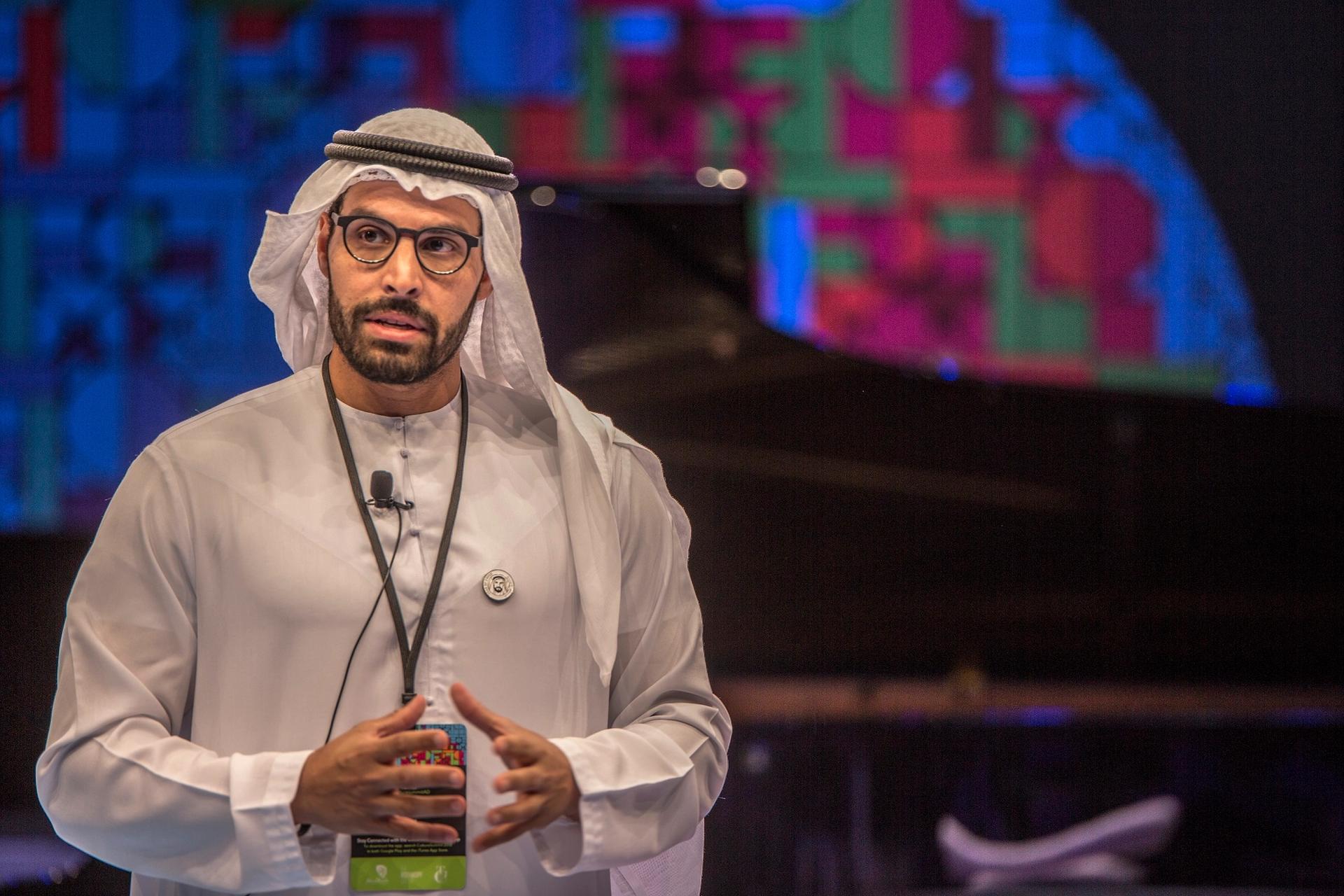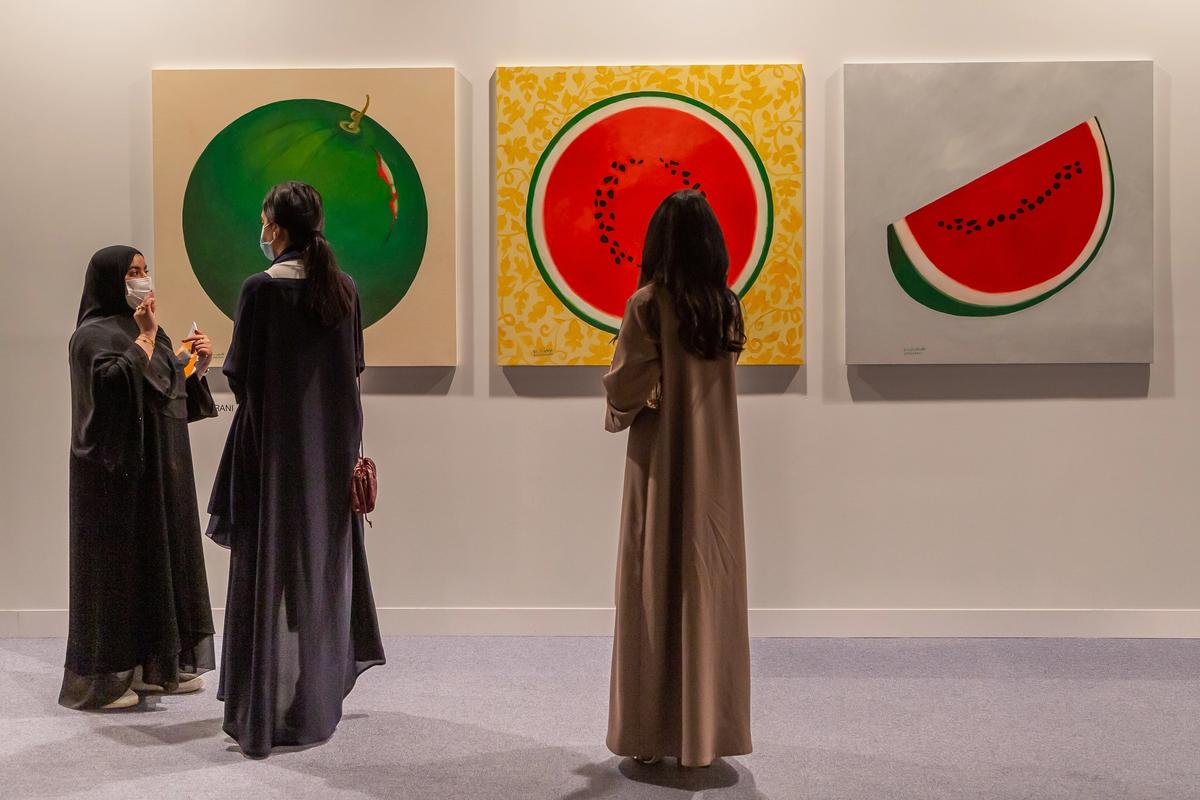Abu Dhabi will build two new museums in addition to the currently planned Guggenheim Abu Dhabi and Zayed National Museum, says the chairman of the emirate’s Department of Culture and Tourism (DCT), Mohamed Khalifa Al Mubarak.
Further information about the museums will come in due time, but Al Mubarak confirms the two are distinct from the institutions that were dropped from the original Saadiyat Museums project, which were to be designed by Tadao Ando and the late Zaha Hadid. These new ones are already under construction and will, the Abu Dhabi executive says, “continue our story”.
With Al Mubarak’s casual announcement of major capital projects, cranes picking away at the Saadiyat sand, and the Guggenheim Abu Dhabi curatorial crew swanning through art fair aisles, moments at this year’s Abu Dhabi Art seemed a throwback to the buoyant 2007 era.

Mohamed Khalifa Al Mubarak, chairman of the Department of Culture and Tourism Abu Dhabi DCT, 2021. © Abu Dhabi DCT
In the past two years Abu Dhabi has undergone a strict lockdown—effectively closing itself off even from the other emirates in the UAE. But now the cultural leadership in the capital are keen to showcase their commitment. “What we’ve done over the last 24 months is to many mind-boggling, to many exceptional,” says Al Mubarak. “In Abu Dhabi there has been a very clear and conscious decision to invest in culture, and investing in culture does not just mean buildings. We’re investing in infrastructure, both soft and hard—whether it’s institutions, music programs, or school curricula.”
The reaffirmation is perhaps necessary as many doubted whether, after 14 years, the full complement of the Saadiyat museums would ever be built. The Guggenheim weathered criticism for the treatment of migrant labourers in the UAE, and there were rumours of stalled negotiations between DCT and the museum in New York. However, construction on the Guggenheim Abu Dhabi was formally announced in September, and the third of the Saadiyat trio, the Zayed National Museum, is even further along. Designed by Norman Foster and named after the country’s founding father Sheikh Zayed bin Sultan Al Nahyan, the museum is due to open in 2023. The Guggenheim Abu Dhabi and rest of the growing Saadiyat cultural district will follow, Al Mubarak says, by the end of 2025.
But this isn’t 2007, and Abu Dhabi and its fair are very different from how they started out.

Rendering of the Frank Gehry-designed Guggenheim Abu Dhabi. Photo: Courtesy TDIC and Gehry Partners, LLP
The fair and the museums project have been entwined from the beginning. The early editions of Abu Dhabi Art attracted blue-chip galleries who brought works for potential institutional buyers, particularly the Guggenheim Abu Dhabi. As the museum encountered delays, many of the major galleries dropped out, and the fair’s director Dyala Nusseibeh has skilfully redefined its role. While this year the Guggenheim Abu Dhabi curators did initiate enquiries around some modern Iranian and Arab works, many of the galleries skewed towards the contemporary, echoing the fair’s own reframing of itself as a source of support for local and emerging artists.
“It’s not just an art fair where you come, buy, and leave,” says Al Mubarak. “On the contrary, it’s educational—a voyage into art and what’s up and coming from artists here and all over the world.”
And though it still lacks the buzz of Art Dubai, its curated programs have made it an important commissioning body for a local art scene with a still limited art infrastructure. This edition saw the duo of Sam Bardaouil and Till Fellrath, newly appointed curators for the Hamburger Bahnhof, mentor three UAE-based artists, and a programme of performance commissions, including one by the Iraqi-UAE artist Rand Abdul Jabbar, organised by the British curator Rose Lejeune.
The museums too are going ahead in a different context. The broad shift in cultural discourse away from Western-centric histories makes the Guggenheim Abu Dhabi more important, with its collection equally apportioned among global regions such as the Middle East, South Asia, and Eastern Europe. (The museum, it is worth noting, began collecting artists from these regions before their recent market ascendancy, meaning it has amassed much of its valuable collection relatively cheaply.)
And Abu Dhabi stands to benefit, sadly, from the chaos of the region, with Lebanon’s economy in collapse and the political situation in Syria and Iraq still insecure. Previously the city struggled to attract Arab diaspora artists because of its social conservatism, the inability to attain visas as a cultural workers, and the high cost of living. DCT is now actively addressing these conditions.
“We will always be involved in projects of scale, but we are also in a position to incentivise and subsidise different artists and create opportunities for them here, not just from the UAE but regional artists, from Lebanon or Jordan,” says Al Mubarak. “We’re organising creative visas, golden visas [visas unattached to employment], creating space for artists in residence. We are involved at every level—we’re even in discussion with developers about an affordable residential product to help these artists come set up in Abu Dhabi.”
That said, reports of Arab artists and curators being denied entry to the UAE remain. The UAE recently shut down visas to Lebanese nationals, in an escalating row with the country over comments to do with Yemen and the growing influence of Hezbollah.
Progressive entities in the capital are, as always, playing a long game. The investment of DCT and other cultural actors has indubitably paid off, with more young artists, curators, and self-organised ventures in Abu Dhabi than ever before. And as much as rumours were circulating at the fair about institutional purchases, reports were also swirling about something even more valuable: institutional jobs.


